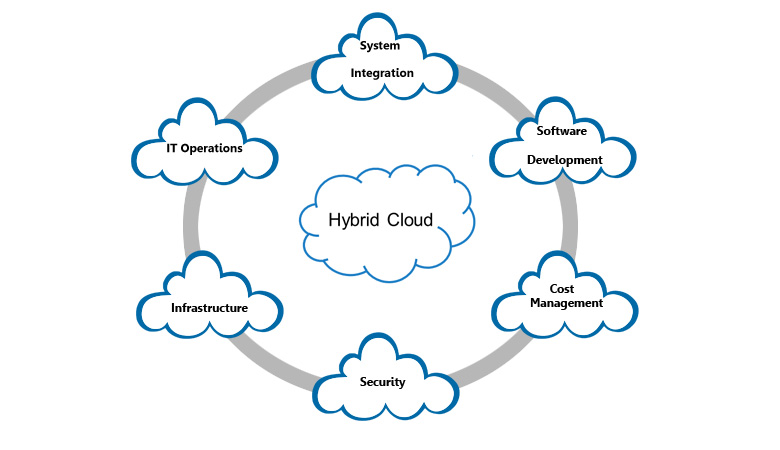Hybrid Cloud Orchestration
Shared Infrastructure, Applications, Security, Databases, Big Data, Analytics, Network Monitoring, Hardware Resource Management, Software, and ComputePlatforms.
Hybrid cloud adoption is driven by a number of factors, including data security and compliance requirements, level of data control and the applications landscape.
Gartner,Inc.defines a hybrid cloud service as a cloud computing service that is composed of some combination of private, public and community cloud services, from different service providers. A hybrid cloud service crosses provider boundaries so that it can't be simply put in one category of private, public, or community cloud service. It allows one to extend either the capacity or the capability of a cloud service, by aggregation, integration or customization with another cloud service. Hybrid cloud can also mean the ability to connect collocation, managed and/or dedicated services with cloud resources.
Jasper views hybrid cloud as an alternative that is heavily dependent on security and compliance requirements and the level of control thatís the customer wants to have over data, applications and individual use cases.
Hybrid cloud can't be simply put in one category of private, public, or community cloud service. It allows organizations to extend either the capacity or the capability of a cloud service, by aggregation, integration or customization with another cloud service.
Varied use cases for hybrid cloud composition exist. For example, an organization may store sensitive client data in house on a private cloud application, but interconnect that application to a business intelligence application provided on a public cloud as a software service.This example of hybrid cloud extends the capabilities of the enterprise to deliver a specific business service through the addition of externally available public cloud services. Hybrid cloud adoption depends on a number of factors such as data security and compliance requirements, level of control needed over data, and the applications an organization uses.
Another example of hybrid cloud is one where IT organizations use public cloud computing resources to meet temporary capacity needs that cannot be met by the private cloud.This capability enables hybrid clouds to employ cloud bursting for scaling across clouds.Cloud bursting is an application deployment model in which an application runs in a private cloud or data center and "bursts" to a public cloud when the demand for computing capacity increases. A primary advantage of cloud bursting and a hybrid cloud model is that an organization only pays for extra compute resources when they are needed. Cloud bursting enables data centers to create an in-house IT infrastructure that supports average workloads, and use cloud resources from public or private clouds, during spikes in processing demands.
The specialized model of hybrid cloud, which is built atop heterogeneous hardware, is called "Cross-platform Hybrid Cloud". A cross-platform hybrid cloud is usually powered by different CPU architectures, for example, x86-64 and ARM, underneath. Users can transparently deploy applications without knowledge of the cloud's hardware diversity. This kind of cloud emerges from the raise of ARM-based system-on-chip for server-class computing.
Jasper has designed Industryís first 5-way Cloud Service for the Healthcare market. 5 way- 2 private data centers act as Private Cloud with Jasper CloudCenter Orchestration, Amazon AWS, IBM Cloud, Oracle Cloud, and Microsoft Azure. Our ability to extend security model across all Public Cloud providers while ensuring highest level of security is key to designing Hybrid Cloud.
